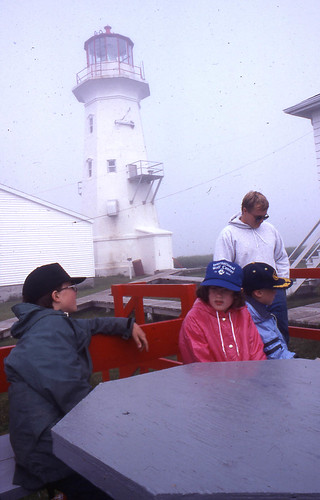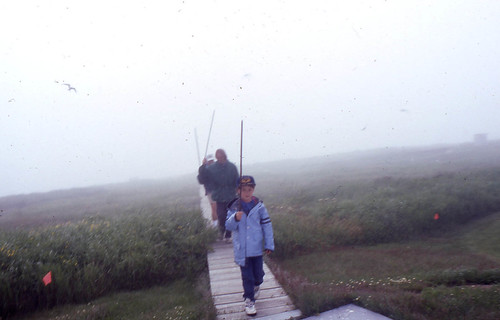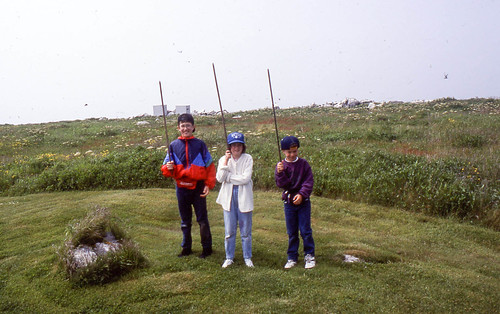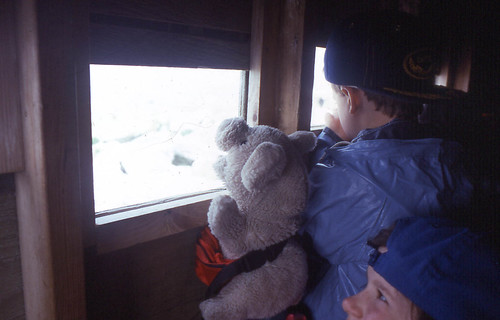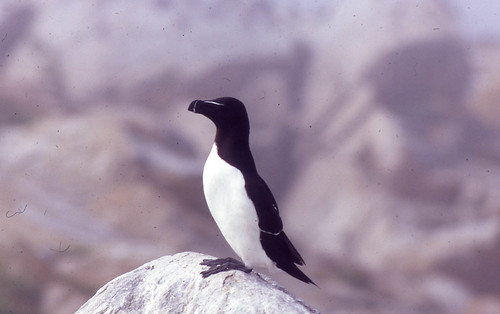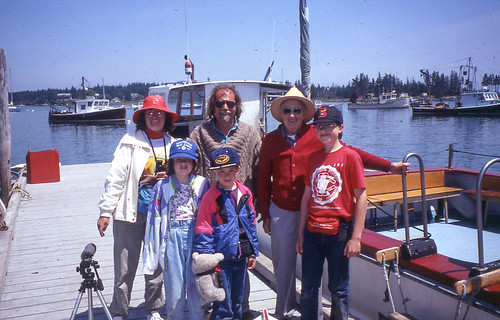In 1993, Russ and I took a family vacation to New York and New England. For our itinerary, we each chose a place we really wanted to see. Russ wanted to visit family in New York City and Long Island. Joey wanted to stop by every spot mentioned in the poem, “Paul Revere’s Ride.” Katie wanted to see Niagara Falls. Tommy wanted to see and go to the top of the Statue of Liberty.
I took parental privileges and chose two spots. I’d always wanted to go to Walden Pond, and I desperately wanted to see puffins on Machias Seal Island, on the border between the Gulf of Maine and the Bay of Fundy. As far as Walden Pond went, the anticipation exceeded the actual event—I’d expected a tiny bit of natural beauty, but it was a crowded urban beach, the bathroom waste basket overflowing with loaded diapers and other trash piled literally to the ceiling, the noise from competing boom boxes carrying all the way to the far side of the little lake. But Machias Seal Island was everything I’d hoped it could be and more.
This tiny island is in disputed territory. The Canadian Coast Guard has manned the lighthouse there since 1832, but the United States claims it belongs to us. Sadly, because both nations deal with the dispute delicately, neither regulates nor polices the lobster industry in nearby waters, which are becoming overharvested. And neither enforces any border patrol rules, so people from neither country have to show a passport to go on the island. One small American company is allowed to bring a boat load of birders to the island once a day. The small boat is allowed to land on the island when conditions are safe, and a maximum of 16 or 17 passengers is escorted to small observation blinds on the island to view nesting seabirds with a minimum of disturbance.
The day we went to the island on July 8, 1993, it was foggy and even a bit drizzly, but winds were reasonably calm and there was little wave action. More passengers were on the boat (captained by Barna and John Norton) than were allowed on the island, and the blinds accommodated a maximum of 4 people. I wanted a perfect experience for Russ and the kids, so they went to the island while I stayed on the boat, which circled, giving us great looks at some spectacular seabirds—Atlantic Puffins, Razorbills, Common Murres, and Pigeon Guillemots—along with Common and Arctic Terns. Russ and the kids got to see all of these species up close and personal—indeed, maybe a bit too much so. Arctic Terns are extremely aggressive in defending their nesting areas. They fly overhead, using their sharp beak to strike the highest point on potential predators. Everyone on the island was required to carry a long pole so the terns would hit that instead of their heads. Russ put his own pole down momentarily to take a photo of the kids holding their poles, and sure enough, an Arctic Tern walloped his head hard enough to draw blood.
The kids had finished first, third, and fifth grade a few weeks before, but 20 years later, they vividly remember that experience. Puffins and Razorbills were barely an arm’s reach from the tiny plywood observation blinds, and they could hear the pitter patter of puffin feet on the roof. Although only four people were allowed in each blind, the captain kindly made an exception for Piggy, our family mascot, saying he wasn’t human so didn’t count, so he got to see puffins, too.
We didn’t have a telephoto lens, but Russ got splendid photos with our 50 mm macro lens.
This was far and away the loveliest and most fun birding experience Russ and the kids ever had.
This year I decided to go back to Machias Seal Island for my Conservation Big Year, both so I could add these seabirds to my year list and so I could see how things may have changed. In my next post I’ll tell you how that went.

